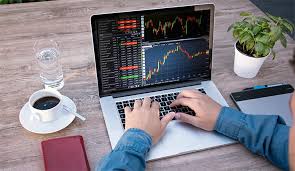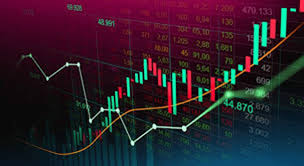
Forex Paper Trading: A Comprehensive Guide to Practice and Master Trading Skills
Forex paper trading is an essential practice tool for new and experienced traders. It allows individuals to simulate the trading environment without risking real money. With paper trading, traders can implement strategies, test ideas, and develop their skills in a risk-free setting. To further enhance the trading experience, many traders turn to resources that can guide them to the forex paper trading Best UAE Brokers that offer excellent trading platforms and tools tailored to their unique needs.
What is Forex Paper Trading?
Forex paper trading, also known as simulated trading, involves executing buy and sell orders using virtual funds. This practice allows traders to familiarize themselves with market dynamics, trading platforms, and various trading strategies without any financial risk. It’s an effective learning method, especially for beginners who are just stepping into the world of Forex.
Benefits of Forex Paper Trading
- No Financial Risk: Since there is no real money involved, traders can experiment with different strategies without the fear of losing funds.
- Skill Development: Paper trading helps individuals to develop their trading skills, learn how to interpret charts, analyze market trends, and understand the impact of economic indicators.
- Confidence Building: Successful paper trading can help boost a trader’s confidence, making them feel more prepared for real trading scenarios.
- Strategy Testing: Traders can backtest various strategies to see what works best for them before committing their capital.
- Understanding Trading Platforms: Paper trading provides an opportunity to become proficient in using trading platforms, which is crucial when transitioning to live trading.
How to Get Started with Forex Paper Trading
To start paper trading in Forex, follow these essential steps:
1. Choose a Reliable Trading Platform

Selecting a trusted trading platform is vital. Many brokers offer demo accounts that allow traders to practice with virtual funds. Ensure that the platform you choose mimics real market conditions closely for the best experience.
2. Set Your Trading Goals
Define what you want to achieve with paper trading. Is it to learn the basics, test a specific strategy, or gain confidence? Setting clear goals will guide your practice.
3. Develop a Trading Plan
Just like in real trading, having a well-thought-out trading plan is crucial. Identify your risk tolerance, entry and exit strategies, and how much time you can dedicate to trading.
4. Start Trading
Begin placing trades according to your plan. Monitor your performance and make notes of what works and what doesn’t. This feedback is invaluable for improvement.
Choosing the Right Strategy

Paper trading is an excellent opportunity to explore various trading strategies. Here are some popular approaches you might consider:
- Day Trading: This strategy involves making numerous trades throughout the day to take advantage of small price fluctuations.
- Swing Trading: Swing traders aim to capture gains in a stock over a few days to weeks.
- Scalping: This is a short-term strategy that involves making a large number of trades to profit from minor price movements.
- Position Trading: Position traders hold onto assets for extended periods, focusing on the long-term potential.
Common Mistakes to Avoid in Paper Trading
While paper trading creates a risk-free environment, traders can still make mistakes that may hinder their progress. Here are some common errors to watch out for:
- Over-Leverage: Just because you’re trading with fake money doesn’t mean you should over-leverage your positions.
- Neglecting Emotion: Some traders treat paper trading too lightly and fail to develop the emotional discipline needed for real trading.
- Not Treating it Seriously: Viewing paper trading as a game rather than a serious practice can limit the benefits.
- Failing to Keep Records: Without tracking your trades, you miss out on valuable learning opportunities.
Transitioning from Paper Trading to Live Trading
After gaining confidence and refining your strategies through paper trading, the next step is transitioning to live trading. Here are some tips to make that jump smoother:
- Start Small: Begin with small trades to minimize risk while you adjust to the real trading environment.
- Stick to Your Plan: Execute your trading plan as you practiced in paper trading, but be prepared to adapt as needed.
- Manage Your Emotions: Recognize that trading with real money introduces emotions like fear and greed. Being aware of this can help mitigate their effects.
- Continuous Learning: Even once you start live trading, continue to educate yourself and refine your strategy.
Conclusion
Forex paper trading is an invaluable tool for traders at all levels. It provides a risk-free environment to learn, practice, and perfect trading strategies. By leveraging paper trading effectively, individuals can build confidence and acquire the skills necessary for successful live trading in the Forex market. Remember to keep practicing, stay disciplined, and seek guidance from reliable sources as you embark on your trading journey.


